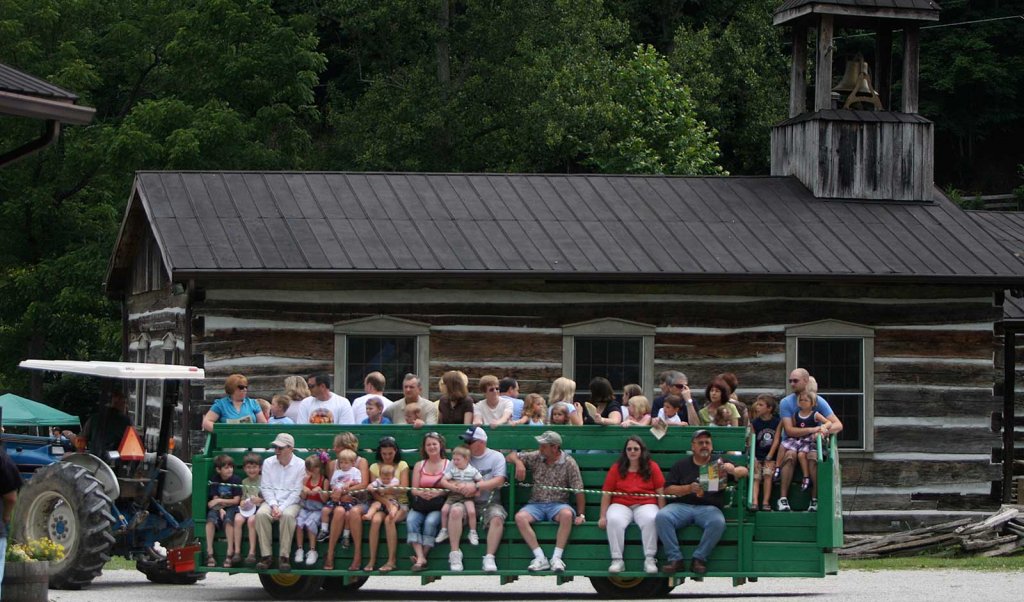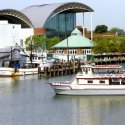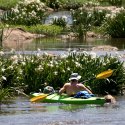A Spirit of Resilience in Huntington
In West Virginia, there's a town that just won't quit
Shortly after I graduated from college, back in the late 1970s, I spent a few years working as a nurse in Huntington, West Virginia, and I fell in love with the area. I was only there for a short while, but the place and, more importantly, the people left a lasting impact on me. I’d been back to visit several times, but my husband, Neil, never had. I’ve told him a hundred stories from my time there; I was excited to show him around the town that holds such a special place in my heart.
Behind the scenes
When I first moved to Huntington, it had been almost 10 years since the tragedy of the plane crash that claimed the lives of many of the Marshall University football team, as well as staff, boosters, and crewmembers. The impact of that terrible loss and the spirit of resilience the town showed then, as it grieved and recovered, was clearly evident; as it is now.
Neil and I had seen the movie We Are Marshall and were interested in learning more about the locations used in the filming of the movie, as well as the town’s reaction to it, on the We Are Marshall tour. Just walking through downtown and then onto the college campus was inspiring. The accident wasn’t really that long ago and a lot of the residents still signify events in their lives as “before the crash” or “after the crash.”
When headed to Buskirk Field, we learned that more than 1,000 people, mostly students, showed up on the day of filming dressed in 1970s clothing for the scene where the crowd chanted, “We are … Marshall!” over and over while school officials met inside the nearby Morrow Library to decide the fate of the football program.
Although the guided tour ends at Spring Hill Cemetery where several of the players are buried, Neil and I extended our tour to the heart of campus just outside the Memorial Student Center, where the Memorial Fountain, a tree-like structure with water rising high into the air, stands in memory of the 75 lives that were lost on November 14, 1970.
“You know,” Neil said soberly. “This monument isn’t the only thing that’s a tribute to those folks who lost their lives.” He pointed out a couple of students walking by who were wearing football jerseys. “The revival of the football program shows the faith and courage of all the people here who were suffering, but came together to build something great to honor those who were lost.”
Smithsonian style

After the tour, we went further back in history at the Heritage Farm Museum and Village, a frontier village where Appalachian heritage is recreated, with museums and tours—and, the only Smithsonian affiliate in the state of West Virginia. The collection at the museum was comprehensive and unique, with artifacts that represented the self-sufficiency and independence of way back when.
Wandering around the property was like stepping back into a time of blacksmith shops, old log homes and one-room schoolhouses. Costumed artisans were also on-hand for live demonstrations. When people settled here, they had very little and yet were somehow able to create a thriving community. And as time moved on, the buildings and museums on the property showed how the people moved right along with it, developing things like farm tools, refrigeration and even an antique washing machine.
We stopped at the Artisan Café, a little restaurant on the property, and enjoyed soups and salads with a delicious bread pudding for dessert. The staff around the entire property were friendly and helpful. It was evident they enjoyed working there. We asked one young lady about the lodging on the property. She told us that along with several inns, they had refurbished a railway caboose into a hotel room. We might have to come back for another visit just to enjoy a night sleeping on the rails!
Spectacular scenery
All that talk about the caboose hotel room fit perfectly with what we had planned for the next day: a ride on the New River Train. We stepped into the antique railcar, excited to take the ride from Huntington to Hinton to see the gorgeous fall foliage of West Virginia. The New River Gorge is considered to be the “Grand Canyon of the East,” and we had arrived just in time for peak color change. We had made sure to plan our visit during one of the only two weekends in the year that this trip is offered.
Breathtaking. That’s the only word I can think of to describe just how stunning the views were. We had a front-row seat to one of America’s most beautiful wonders. We booked a Dome Car and its massive windows and glass ceiling provided the perfect unobstructed space to admire the golds, reds, oranges, and greens of the changing leaves that truly can’t be appreciated by car.
Along with all of those gorgeous colors, we caught sights like the rushing Kanawha Falls and Sandstone Falls, Hawks Nest Dam and bridge, Stretcher Neck Tunnel, and the famous New River Gorge Bridge. We also enjoyed the rustic charm of The Railroad Festival that was in Hinton, put on especially for these trips.
Both breakfast and dinner were served in a private dining car. We were instantly transported back in time, when travel was not only a luxury, but an event. Between the incredible views outside and the dining experience, the New River Train ride was a treat for all the senses.
When we returned to Huntington, Neil and I took one last stroll through downtown, and I was suddenly struck by how much the area had been revitalized since I’d last visited. There really hadn’t been a lot going on back then, but now in front of me was a bustling and active downtown area. As I thought about our weekend, and everything we had seen, it just reminded me again of Huntington’s resilience. And that is one of the main things that keeps drawing me back to this place. Despite all of the challenges and struggles they have faced, the people of this wonderful town have a spirit of growth that you just can’t stifle.


